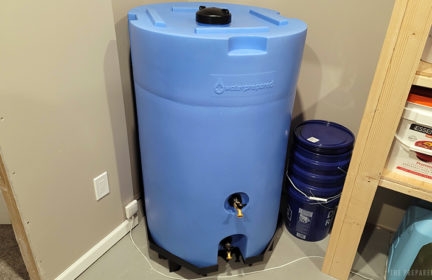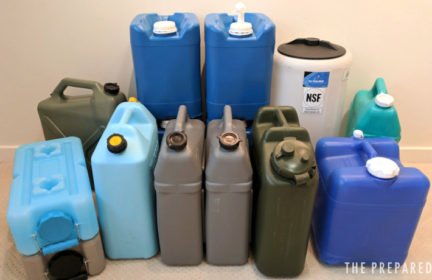My experience of using a WaterBob during a personal disaster
Recently, on another thread, Advice for a new prepper – hurricane/flood scenario in Florida, I spoke about actually using one of our water preps (for a family of five), a WaterBob.
Biggest Pro: An opportunity to add 100 clean gallons of potable water in minutes without leaving the home. This water is safe to store/use for up to 16 weeks.
Pro: The unit cost of $35-$40 is fairly reasonable. Buying 40 one gallon bottles takes up a lot of space. The WaterBob takes up a small amount of space and can be stored for years and only used during an emergency.
Con: Once filled, the WaterBob is not reusable. If you don’t use it, it will need to be thrown away and another WaterBob purchased to be placed in your storage.
Pro: If you think you may lose tap or well water: Hurricane, public health warning, possible wildfire evacuation, PSPS (California acronym for a Public Safety Power Shut off), or a broken water pump that has to be shut down for repair, this box can be pulled from under your bathroom sink, put in the bathtub, filled with 100 gallons of potable tap water.
Con: Yes, you lose the use of the bathtub. But, perhaps baths/showers aren’t a best idea if you’re short of potable water. One could always take out a few gallons from the WaterBob, heat it on a stove and take a spit bath.
Pro: WaterBob comes with a hand pump included. The hand pump does work. (However, if one doesn’t have strong hands, a new, $12-$14 liquid transfer pump that requires two D batteries is much easier than the included hand pump.)
My personal experience: Family of 5 in rural San Diego county had a broken water pump. In the 3 weeks until that pump could be repaired, we used the 4 WaterBobs from our preps to fill all 4 bathtubs in the two homes on the property. We also used a lot of our stored 16 oz. bottles, 1 gallon water bottles, and 5 gallon water containers for donkey/goat/dogs and to flush the toilets. Showers and washing clothes was done at the home of a nearby family member, and the empty 5 gallon containers were also re-filled at the nearby family member home to be used again (and again….) until the crisis was over.
Even being careful, we used nearly all of the 400 gallons available in the WaterBobs. We were grateful for the much easier battery-powered liquid transfer pumps vs. the hand pump. After the pump was repaired, we actually tried to see if the WaterBobs could be dried and reused, but after 3 weeks of use, it was not feasible, so I purchased 4 more for $140. Even at $140, this was still cheaper and easier all round than getting 400 potable gallons any other way. (Trust me–we explored ALL of our many water redundancies first!)
Feel free to provide your own pro/con statements. If anyone else has actually used a WaterBob for any reason, please tell your story.
-
Comments (9)
-

